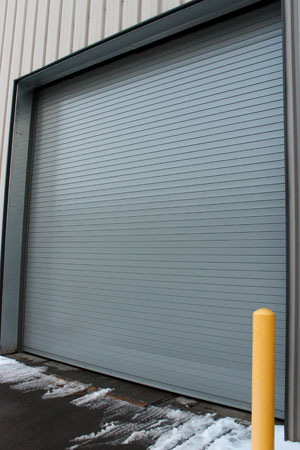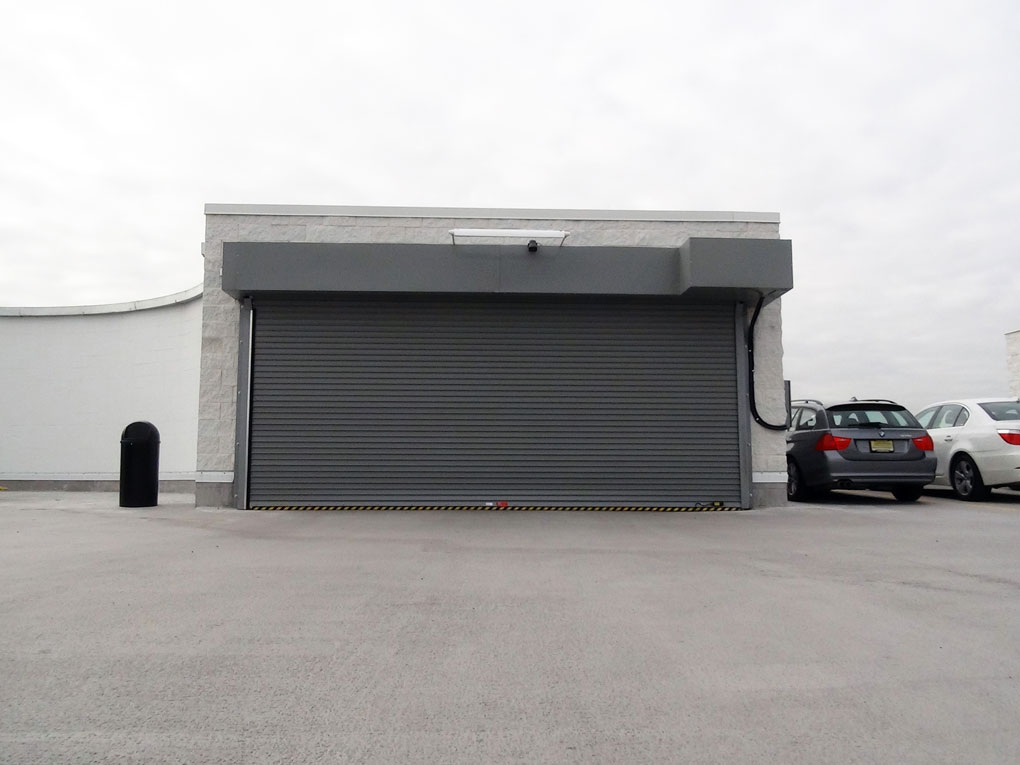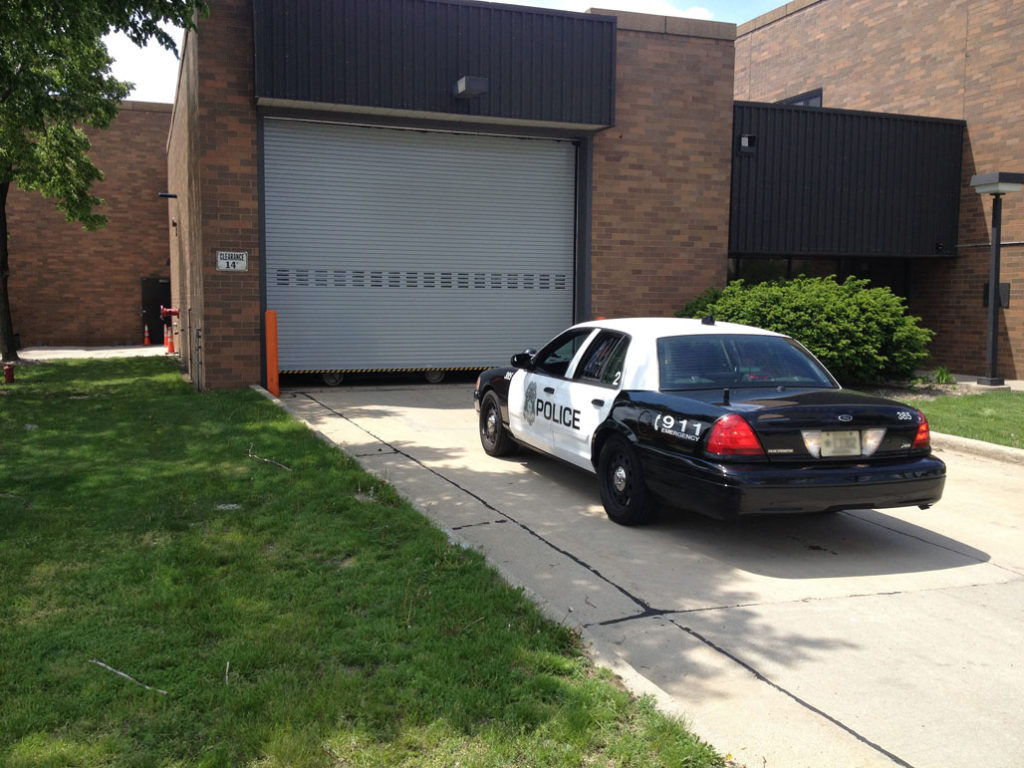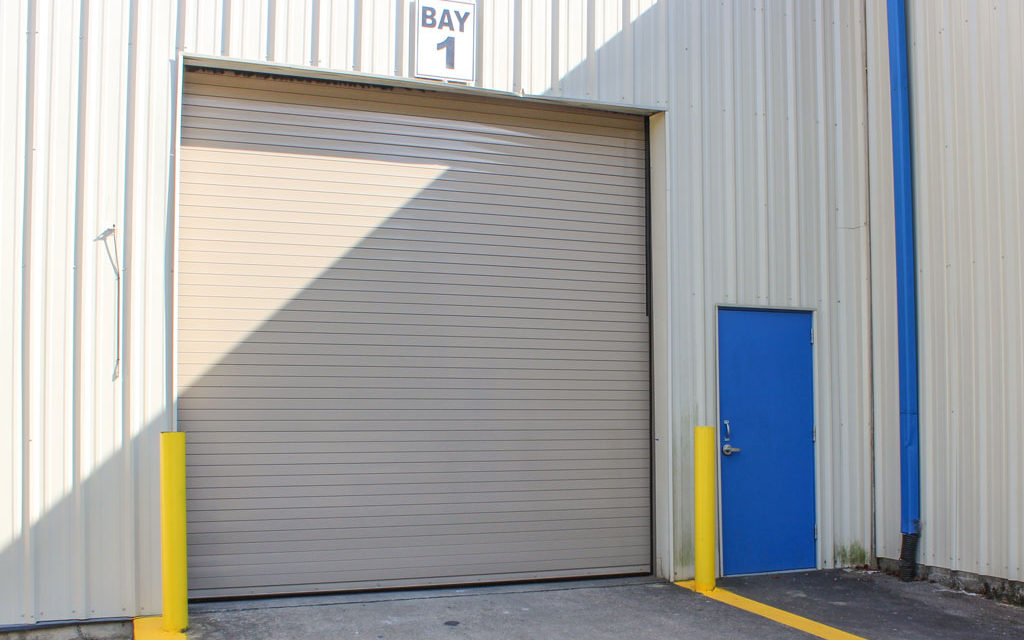Specifications are an essential part of the design process, but not the most glamorous. It was said by Charles Eames that the details are not the details, they make the design. If the specification is unclear or lacking detail, it will often result in the wrong product being installed. In the case of high-performance products, it can mean costing a company time and money. Don’t fall for these top five myths related to specifying a high-performance door.

Image credit: ©CornellCookson, Inc.
Myth: All high-performance doors are equal.
Fact: Door and Access Systems Manufacturing Association (DASMA) defines a high-performance door as one that can meet the minimum requirement of 20” per second opening speed and 100 plus cycles per day. When you specify a “high-performance” door, chances are, it will either not meet or drastically exceed your needs. Think ‘Goldilocks and the Three Bears’ – If the application requires an opening that operates at 24” per second a door that operates at 20” per second will be too slow, a door that operates at 32” per second will be too fast but a door that operates at 24” per second will be just right. Defining the desired door opening speed in inches per second will eliminate any doors that aren’t quite the right fit for your application.
Myth: Faster is better.
Fact: Faster is NOT always better. The best approach when specifying a high-performance door would be to determine the minimum speed required in conjunction with your activation device for a seamless experience. If you need a door that operates at 24” per second, why specify a door that operates at 32” per second or more? Not only will that door be an additional initial cost, but the operating costs could be more depending on the operator voltage and phase requirements.
Myth: Adding 100K cycle springs to a standard door makes it a high-performance door.
Fact: Putting 100K cycle springs on a standard rolling door and calling it a high-performance door is equivalent to putting an emblem from a luxury car on an economy car and calling it a luxury car. Just because you added that one high- performance or high-end item, it does not change what it really is.
When specifying a high-performance door, it is best to look at the entire construction of the closure to ensure that all components of the door are durable. It is also a good idea to look into a springless version if a true high-performance door is required because a springless door will last a lot longer without any concerns of the springs breaking.

Image credit: ©CornellCookson, Inc.
Myth: Lifetime cycles are the most important aspect of cycle life.
Fact: Peak cycle times are much more important than lifetime cycles. Defining peak cycle times and ensuring that the door can handle your specific needs is the number one priority. For example – instead of specifying a 200,000-cycle door, it’s more helpful to state that the peak period of cycling is 75 cycles per hour from 7 am to 9 am and 4 pm to 6 pm so you can be sure the door that is installed is able to handle the peak times appropriately.
Myth: Maintenance…. what maintenance?
Fact: Maintenance concerns may not always be at the forefront of a specifiers mind, but it’s crucial for a building owner or facility manager. A true high-performance door will require virtually no maintenance, outside of daily checks. No maintenance means no down time, which is very beneficial for many operations. Yes, the initial cost may be higher, but the benefit of virtually no maintenance costs and resulting downtime that you would have with a standard rolling door makes it worth it to many owners.

Image credit: ©CornellCookson, Inc.
Simply avoid these pitfalls when specifying a high-performance door, and you will ensure that you are choosing the right door for your application.
There’s an easy way to check to see if your door needs to PERFORM:
- Productivity Is passage through a secure opening a key success factor in the productivity of my business?
- Environment Do I need to control the temperature of an environment, even while exposing it to the elements on a regular basis?
- Reliability If this door can’t operate, will I lose money?
- Frequency Will my daily cycles be in a short, peak time – NOT spread out evenly throughout the day?
- Operating speed Do I want the door open as quickly as possible?
- Routine traffic Is the traffic going through the opening vital to business operations?
- Maintenance Do I want to avoid ongoing maintenance expenses?
If you’ve answered yes to two or more of these questions, it is likely that you need a high performance roll up door.
Want more information about high-performance doors? Download our newest white paper here.
About the author
Siva Davuluri
Director of product strategy for high performance doors at CornellCookson Inc.
Siva Davuluri serves as director of product strategy for high performance doors at CornellCookson Inc. He has been in his current role for five years at the Mountain Top, PA based company, which is the largest coiling door manufacturer in the USA. Davuluri has more than ten years of experience in design, development and commercialization of new products. He graduated from North Dakota State University with a Master of Mechanical Engineering degree and completed his Master of Business Administration degree from Cornell University. He is also a member of the technical committee for high performance doors at DASMA, North America’s trade association for manufacturers of garage doors, rolling doors, high performance doors and access systems.





